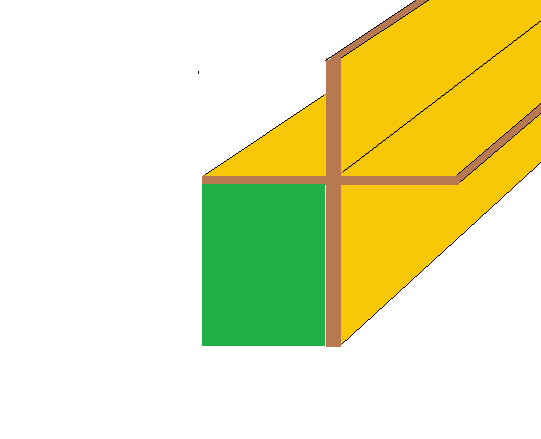A Finn mast repair, by Martin Armstrong of Gurit
The important points to note when making any repair is that you do not want the repair area to have different properties to before it was damaged. If you make the repair area stiffer / stronger than the laminate around it and all you will do is transfer more loads / forces into the interface between the repair and the original and induce failure there. So the fibre reinforcement should be a direct replacement for the original used and its orientation and construction (woven or unidirectional) should be duplicated.
And ideally in the case of a mast you do not want to be adding weight – as a weight x distance will upset the feel of the boat on the water and it goes without saying it should be the same shape – straight and true!
OK – taking the last point first as it is the best place to start. There are lots of ways of holding the mast in position but the quickest and simplest is to use plywood and a steel bar of the just smaller diameter than the track.
First – coat the bar in multiple coats of mould release or good quality paste wax polish, polishing between coats ( at least 4 ) and place somewhere clean and safe.
Second – take the dimensions of the inside of the mast at the break point accurately and using ply wood make a cross shape as shown below.

The simplest method is to cut the two dimensions into ply wood and then cut a slot the thickness of the plywood to just past the half way point on each and slot them together. And if your measurements for the slots where not as accurate as you would like use hot melt glue to hold them in place as shown above. If you need the glue now is time to recheck the outer measurements as we want this to be an accurate fit into the mast – not to big and not a rattle fit. If it is not right do it again now.

Next take the some expanded polystyrene foam or Styrofoam and cut it to fill in the quadrants – see one quadrant filled below

With all four cut using either hot melt glue or double sided tape stick the foam into place.
Next shape the foam to the internal profile of the mast. Now wrap the whole thing with packing tape making sure it over laps at least 25% of the width. I would suggest working from end to end so that when you slide it into place the edges are less likely to catch. BUT ensure the ends of the mandril / former free from tape over at least some of each section of expanded polystyrene / Styrofoam – you will see why later.
Coat the steel bar again with at least 4 coats of mould release / paste wax polishing between coats – yes you have done it already but think how much easier it is to do this than remove a glued in bar from the track.
And as you have a waxy cloth put a few coats of wax onto the surface of the tape you have just applied to the mandril / former polishing between each.
Put these bits away – safe and clean again.
Time to prepare the the broken sections of the mast – what you are looking to do is generate the section below. Now “a” needs to be a MINIMUM of 6 times “b” and the larger the better as it gives more bonding area onto the original laminate and so also helps to spread the load more evenly as all of the new reinforcement plies do not terminate at the near the same point.
But support the edge of the broken mast as you sand the laminate – as you do not want to break off more from your mast.

OK at this point I would like to point out carbon dust will make you itch so (a) do not put the mast between your legs when your sanding it (b) wear overalls / clothes you are going to wash straight after doing the sanding.
In addition if sanding dust gets into electric motors or electrical equipment it can make it go bang – making electrical contacts it should not as it is conductive.
Wear gloves a dust mask and goggles – the epoxy in the carbon laminate will not do you any harm but no-one likes black boggies, or black lungs for that matter as the dust is small enough to be inhaled. You have been warned!
Clean up the work shop area and don’t use the vacuum cleaner unless you don’t care if it does not work again. Now go and have a shower and get changed.
Assemble the parts and use the steel bar in the track so that it does not rotate relative to each other – and importantly the broken and prepared edges of the parts just touch.
Now take some time and effort to make sure the mast is straight and true, then takes some more time that it is straight and true and sufficiently firmly together that you will be able to laminate on it and it remain true.
Now check the two points above again – we don’t want you having a mast which looks like a dogs leg.
Points to remember epoxy is not just epoxy – get a good quality laminating system not a wood epoxy, make sure it has sufficient working time for the conditions you are working under and make sure you have all the materials and tools to hand before you start. From us (Gurit) the Ampreg 21 is a good choice Also that the work shop is not to warm and not to cold – 18 degree C minimum 25 degree C maximum, and below 70% relative humidity.
And if I hear that the epoxy has not cured – because you did not get the mix ratio correct I will be over to see you to insert the mast broken end first. Digital scales are best for this and make sure you are using the mix ratio by weight – as it will be different to the mix ratio by volume. Mix ratio is very important, get it right and your mast will be stronger and tougher.
Also think about the working height of the repair – being on your knees or bent double when laminating is for the professionals, try and make it as easy for your self as you can – within the limitations the mast permits
Now start the lamination process duplicating the weight and fibre orientation of the original. And importantly the Fibre Volume Fraction (FVF). Every wet laminator in the world puts far to much epoxy into the carbon – the ideal is around 30% of the fibre weight but you will never get down to these levels but try and not have stupidly high levels. To much epoxy in the laminate makes it stiff and brittle – and heavy. You can try cutting a credit card to the curve of the mast and running it along the surface with light pressure to take off the excess – but keep the fibres smooth and straight with no lumps and bumps.
Having tried to ensure the carbon is “wetted out” with the epoxy and that there is not an gross excess of epoxy you now have options (i) leave it to cure (ii) try an get further epoxy from the repair laminate
If you do decide to remove further resin then the easiest method to use is shrink tape. This is not the tube used in electrics to protect cable joints, this is a tape which looks like sellotape but without the same sticky. Shrink tape comes in a number of different width (12mm 25mm 38mm and 50mm) and is wound onto the repair area like applying grip tape to a tennis / squash racket handle – each wrap over lapping the previous by 50% of the width. Then 2 -3mm holes are drive into the wrapped surface to allow the resin to escape. Application of a good quality hot air paint stripper for a few seconds evenly over the surface then causes the tape to contract and squeeze the laminate – consolidating it and removing the excess epoxy via the holes.
Points to note when using shrink tape
(a) note the shrink tape has a release side and a none release side, make sure the release side is against the epoxy laminate. The problem is that some manufactures put it on the in side and some on the out side – ask the supplier if you are not sure.
(b) Make sure you have the film applied and the film shrunk before the epoxy cures to far – when it has gelled and will no longer flow
(c) be aware that if you have not got the repair laminate tight when the film shrinks it could cause wrinkling in the carbon – which will look bad and lower the repair strength.
(d) a little to much epoxy will have less effect than to little – if you squeeze near all of the epoxy from the laminate the properties will be very poor in compression. So if in doubt error on the epoxy “rich” side of the equation.
And to another choice – to post cure or not. Post curing is the application of heat which causes increased polymerisation of the epoxy. What they means is that you heat the repair – commonly to 50 degree C for 16 hours – it will get stronger, up to 15 % stronger without any weight gain.
But interesting this does not have to be done straight away heating the repair even a few years later will have the same result.
I have used a cardboard box with a old style filament bulb which the power run through a dimmer switch – this gives and enclosed insulated area with a heat source I can control by the dimmer switch / or changing the bulb size, which is also relatively safe to run when I am not present. And best of all the cardboard box is easy to tailor around the repair area and get a good fit.
Just don’t get the bulb to close the repair area as you want even heating of the whole repair.
You could give the repair at least a week to cure (at 20 degree C) and then test the flex of the mast – and then post cure if needed.
Now that you have done the repair it is time to knock out the plywood and foam former – and you should see why it was cut the way is was, as it should be very easy to knock apart. If the foam has become stuck to the inside a little acetone will dissolve it which is why you left the ends of the foam exposed when applying the tape.
Then it is tiding the surface filling and painting which I am sure you know how to do. Just when preparing the surface for the filler not to damage the carbon excessively
I hope this helps – but give me a call / email if anything is not clear or you have questions
Martin Armstrong
Composite Technologist
Gurit Ltd (Formally SP Systems)
email martin.armstrong@gurit.com
tele +44 (0)1983 828103
Next Event
Day(s)
:
Hour(s)
:
Minute(s)
:
Second(s)






